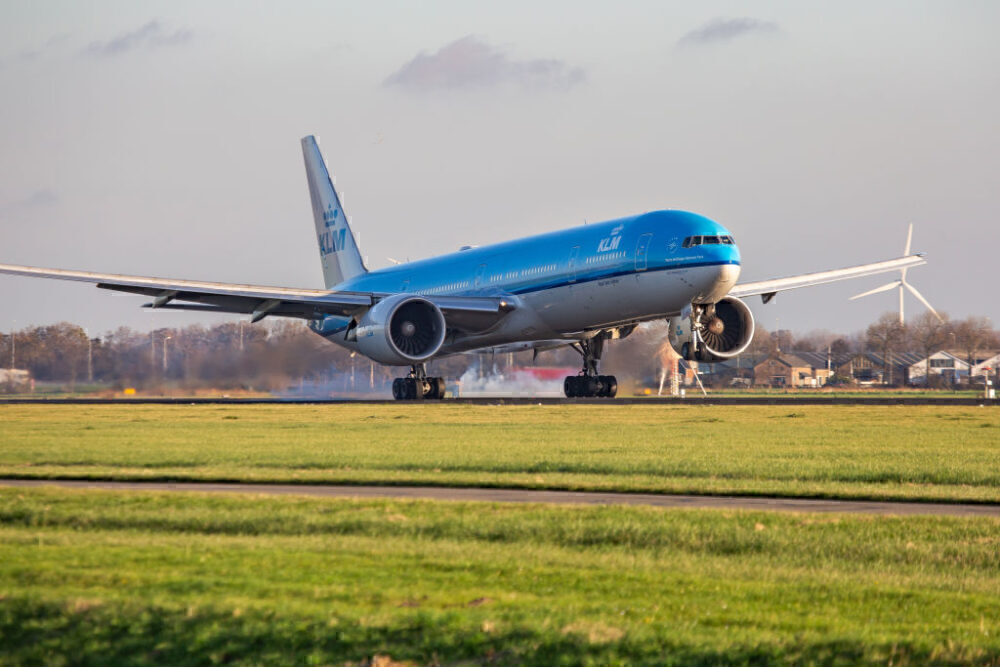As an airport’s passenger numbers grow, so does its need for additional runways. As more are built, the airport’s surface area expands further and further outwards. This can mean that newer runways have to be built a significant distance from the terminal building. Perhaps the most famous and extreme example of this is the ‘Polderbaan’ at Amsterdam Schipol (AMS).

Approaching 20 years of operations
In 2003, Amsterdam Schipol Airport opened its sixth runway. This would be its longest, measuring a colossal 3,800 meters / 12,467 feet in length. By this time, Schipol was already a sizeable European hub. In any case, the airport reports that plans for the Polderbaan’s construction had existed since 1967.
As such, there was no space to integrate it into the existing five-runway setup. The airport was also aiming to reduce the impact of noise pollution on local communities. As such, it elected to construct the new runway to the west of the main complex, beyond the A5 motorway that had previously marked its perimeter.
Stay informed: Sign up for our daily aviation news digest.




The location for the new landing strip was in an area of land that had been reclaimed from a body of water. This is known as a ‘polder,’ hence the new runway’s name. Its compass bearings are 18R/36L. Today, the airport reports that the Polderbaan is its most frequently-used runway. This is despite the fact that noise restrictions dictate that it can only be used for departures and arrivals to and from a northerly direction. 2023 will mark two decades of Polderbaan operations.
Requiring a lengthy taxi
While the Polderbaan makes useful considerations for noise restrictions, its use can prove a slight inconvenience for connecting passengers. Amsterdam represents a key hub for passengers connecting from KLM’s regional network onto worldwide destinations or vice versa. However, it is important to consider your connection time when changing planes at Schipol.
This is because the frequently-used Polderbaan is located five kilometers from the terminal. The distance, which can lead to taxi times of 15 minutes and more, is so great that the runway has its own air traffic control tower! This is also a necessity when one considers that, according to the airport, in 2016, “24% of all aircraft started and 39% of all aircraft landed here.”




Another European example
Frankfurt International Airport (FRA) also features a runway situated on the other side of a previous perimeter road. Its 2,800-meter (9,186 feet) long runway 07L/25R sits beyond the A3 motorway, although it is not as distant as the Polderbaan.
This strip, which opened in 2011, is only used for landings. However, it cannot handle larger aircraft such as the Airbus A380, Boeing 747, and McDonnell Douglas MD-11. Funnily enough, certain 747s did feel the forbidden surface of runway 07L/25R beneath their wheels in December 2020. However, this was only for storage, as the ongoing coronavirus pandemic has led both the runway and some of Lufthansa’s jumbos to become surplus to requirements.
Have you ever taken off from or landed on the Polderbaan? If so, what is the longest taxi time you’ve experienced when using this runway? Let us know in the comments!



